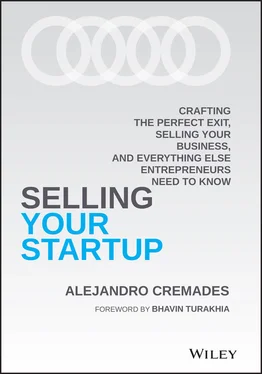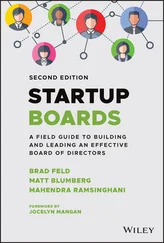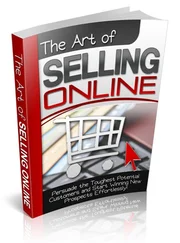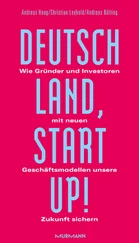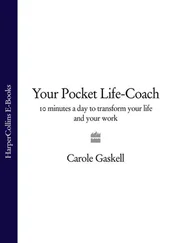Growing up, I was a quintessential nerd—with a penchant for math and physics and a natural affinity for writing code from the age of 10. I was fortunate to find my passion early on and spent every spare moment in the computer room, when PCs were monochrome terminals with MS-DOS and 5¼-inch floppy drives. I devoured biographies with fervor and learnt much from the success and failures of Intel, Apple, Microsoft, Oracle, and countless others. It was clear to me then—I wanted to start my own company in this revolutionary new world.
Seven years later, I was raring to go, and along with my younger brother Div and $300 of borrowed capital from Dad, we started our first company—Directi—a web presence provider and domain name registrar.
Fourteen years later, we were number four worldwide, with 10 million domain names, a network of over 50,000 global resellers, and $70 million in revenues. Hari, then CEO of Endurance International and now a close family friend, approached us with an offer to buy Directi and I still remember to this day being very conflicted about it. However after six months of them courting us, and several deep strategic discussions, it made sense and we sold the company for $160 million—our first exit.
Div, my brother, had already independently started Media.net, which he then grew into a $900 million exit. And I had turned my attention to Radix (currently the number one new gTLD registry) and Flock (now Nova—competing with G Suite and Office and providing collaboration and productivity software to global users). Finally in 2015, I cofounded Zeta with Ramki Gaddipati—with a mission to make payments invisible and reimagine banking
I have never started any company with the goal of selling it. My startups were born out of my passions. I believe “frustration is the genesis of entrepreneurship”—and when entrepreneurs see something they would like to change, they go ahead and effectuate that change. If you are reading this book, perhaps you have already launched and built your own company or are in the process of starting up. As a successful business, however, most founders will receive one or more (bittersweet) opportunities to sell their company.
There are a countless number of books on starting up, running, and growing successful businesses. However, most of the material available on M&A comprises glorified media stories, and not much quality content has been published on this critical milestone of a startup's exit (pardon the oxymoron). There certainly wasn't anything like this when I was deliberating over my exit option.
I have bootstrapped or self-funded my entrepreneurial pursuits, and I have been in the fortuitous position of not having to raise capital for most of my past companies. If I had, however—Alejandro's book The Art of Startup Fundraising would have been my trusted guide.
With this new book, Selling Your Startup , Alejandro makes a great contribution to the startup community by addressing the less commonly covered subject of navigating the other end of the startup lifecycle intelligently. Understanding this process can enable you to meaningfully harvest years of hard work.
Whether you are a later stage startup receiving inbound offers or are encountering tough times and contemplating a distress sale, this book will help you build your business with the end in mind. It will help you master the art of the exit. If you foresee one in the near term, then this book will serve as your field guide.
It will walk you through strategies, preparation, paperwork, and processes. It will help you with a decision framework for your next chapter after. After monumental sacrifices, it is a travesty to see founders and teams end up with unfair outcomes during M&A processes. If you want your mission, team, and consumers to continue to flourish beyond an exit, and maximize the outcome for everyone in a win-win manner, then it's time to turn to the next page …
—Bhavin Turakhia
Founder
Zeta, Flock, Radix, CodeChef, Directi
1 Seeding What Would Grow into Panthera Advisors
I first dipped my toes into the acquisition world while running my previous company, Onevest, which was backed by 14 different venture capital firms.
Building Onevest was a wild ride—full of terrible lows and exceptionally steep highs—but it became one of the largest communities of entrepreneurs, supporting over 500,000 founders in 234 countries.
Onevest and its portfolio of companies provided services such as cofounder matching, accelerator programs, a vibrant Q&A discussion board, key workshops on everything related to building and scaling businesses, and a platform where investors could meet and invest in startups.
It was a dynamic and deeply loyal community.
Accelerated Growth through Acquisitions
On the journey of building and scaling Onevest, part of its growth was organic, which we absolutely lucked out on, but the other part of its growth was attained through acquiring major competitors in the space.
In total, we acquired three of our direct competitors, which was bold and certainly risky, but it turned out to be a strategic move in the end. Two of those transactions, CoFoundersLab and FounderDating, were purchased in the millions of dollars and were a bit complex, given all the stakeholders who had a hand in the pot.
In one of those deals, we inherited investors who were not very sophisticated in these sorts of deals. A ton of back-and-forth negotiating ultimately shot the billable lawyer hours through the roof.
As newbie investors, they would either get stuck on standard terms or they would request things different from what was generally accepted in the market. That proved to be a painful but valuable lesson I will never forget. This specific experience is the reason I typically warn entrepreneurs to stay clear of non-sophisticated investors.
These kinds of investors can literally blow up a good deal, or at least significantly complicate things. Believe me, it can be frustrating and complete nonsense when you experience it firsthand. It's almost as if someone is throwing stones at their own glass house—but what can you do?
Yet those specific deals each came with important lessons that really helped me to understand how startup acquisitions work from an operator's perspective.
Acquisitions, to my surprise, were one hundred times harder than rounds of financing. And there's dealing with all types of emotions and egos, so mastering psychology is key.
Inbound Interest and a Path Forward
About eight years into building the business, Onevest started to receive inbound interest from companies that were drawn to our distribution capabilities, data, subscription structure, and access to the venture world.
The offers to buy the company couldn't have come at a better time. I had spent nearly a decade building Onevest with my wife, Tanya Prive, and at that time, she was pregnant with our second and third child (yes, identical twins!). But we soon found out the pregnancy held other surprises for us.
At six months, Tanya was diagnosed with twin-to-twin transfusion syndrome, a rare condition affecting the placenta in identical twin pregnancies where blood is transfused disproportionately from one twin (donor) to the other (recipient), causing the donor to have decreased blood volume and the recipient to be overloaded with blood, which often results in the death of one or both babies. With that diagnosis, Tanya was rushed into the hospital for an emergency C-section.
Our twin daughters were born at 28 weeks gestation, weighing in at 2.4 pounds and 1.7 pounds, respectively, which catapulted us into weeks, and then months, where our baby girls fought for their lives in the hospital. After 129 and 180 days, respectively, at the neonatal intensive care unit (NICU) at Mount Sinai in New York City's Upper East Side, they were finally discharged and able to come home. Our lives had changed, and I knew that stepping back from the daily grind was the right thing to do for myself and Tanya.
Читать дальше
